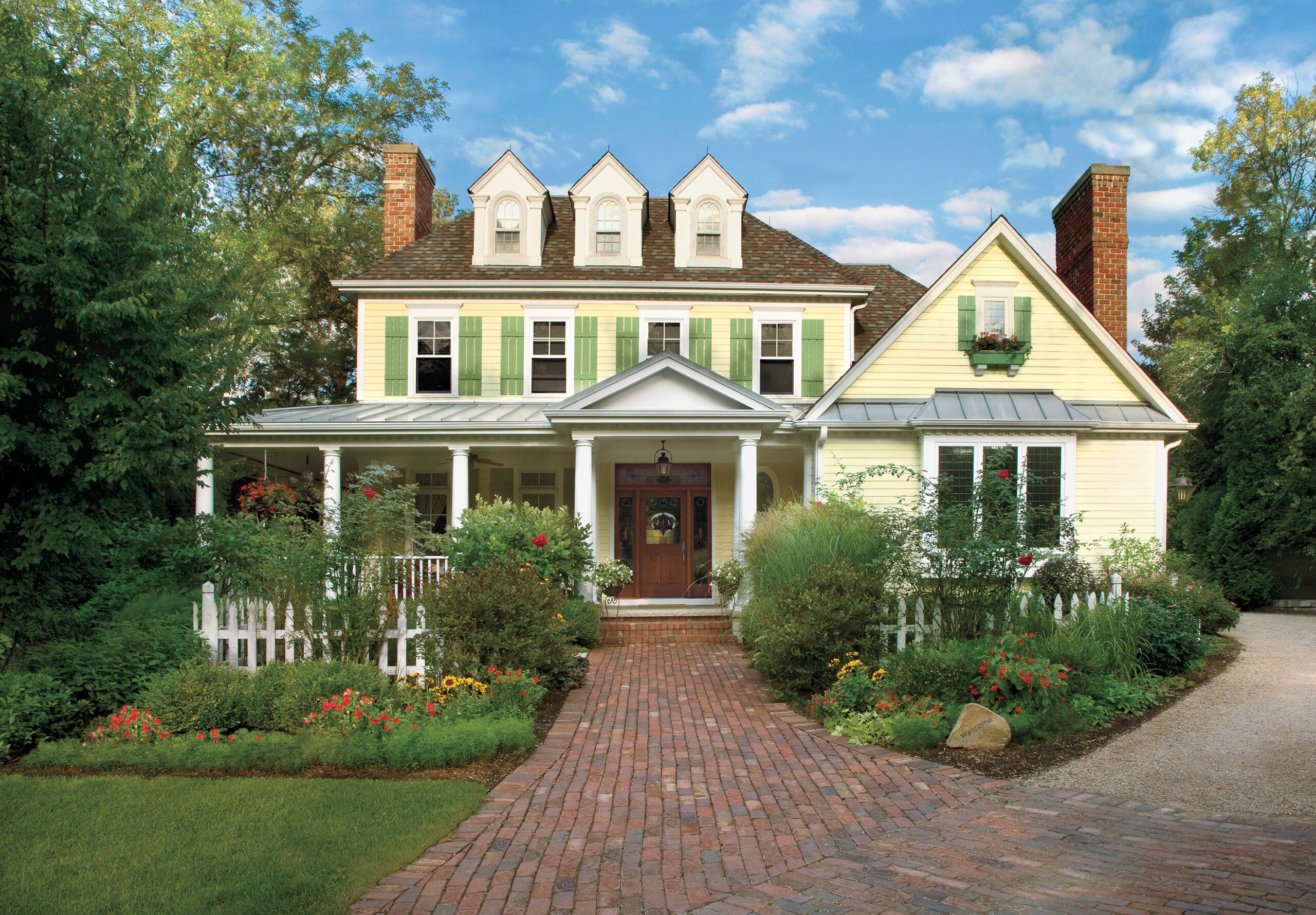Plants placed along your foundation can soften the transition between your house and the surrounding landscape, creating a welcoming entrance. This comprehensive guide will offer tips for selecting the best foundation plants for your home.
First, we’ll give you two rules of thumb to go by. Then we’ll dive into the specific types of plants that work best.
House Huggers

There is something unsettlingly stark about the intersection where house meets land—it begs to be softened with greenery. But hiding that juncture with a tight fringe of evergreens isn’t the answer. Neither is a one-scheme-fits-all formula.
Instead, consider a mix of trees of different sizes and types, suggests Anne F. Walters, a West Chester, Penn., landscape architect.
“Two conical things on either side of the front door with two tall things on either end of the house with lower things in the middle—that’s a dated approach,” Walters says.
“The right foundation planting for most houses is a nice mix of evergreen and deciduous material, with dwarf varieties in order to keep window views open, some repetition of plants for a unified look, and an overall casual, naturalistic feeling.”
Tallest in Back, Shortest in Front
A successful foundation planting starts with picking the right plants in the right proportion: evergreens to provide the structural bones of the beds year-round, deciduous and flowering shrubs to add texture, and perennials of varying heights that yield long-lasting color.
Michigan-based landscape designer Jeremy Christianson offers this rule of thumb: About 50% of the foundation bed’s space should be evergreens, 25% deciduous and flowering shrubs, and 25% perennials. But even then, a good plant can be placed in a bad spot.
When you see a beautiful, blooming rhododendron at the garden center in a 2-gallon pot, consider how big it will get over time before you plant it a foot from your house. Plan for at least 1 foot of space between the house and any mature plant to allow room for maintenance. This pushes the bed farther from the house, which most designers want, with front-of-the-house beds 6 to 8 feet deep. “This helps improve the view from inside, too,” says Walters.
Lastly, designers agree that a restricted color palette helps give foundation plantings a cohesive look. “Too many colors distract the eye,” Christianson says. “When in doubt, use more plants with the same color or bloom instead of adding additional colors.”
The Best Plants to Place Near Your Foundation
The sections below describe top foundation plant picks from our designers.
Evergreen Shrubs: Rhododendron
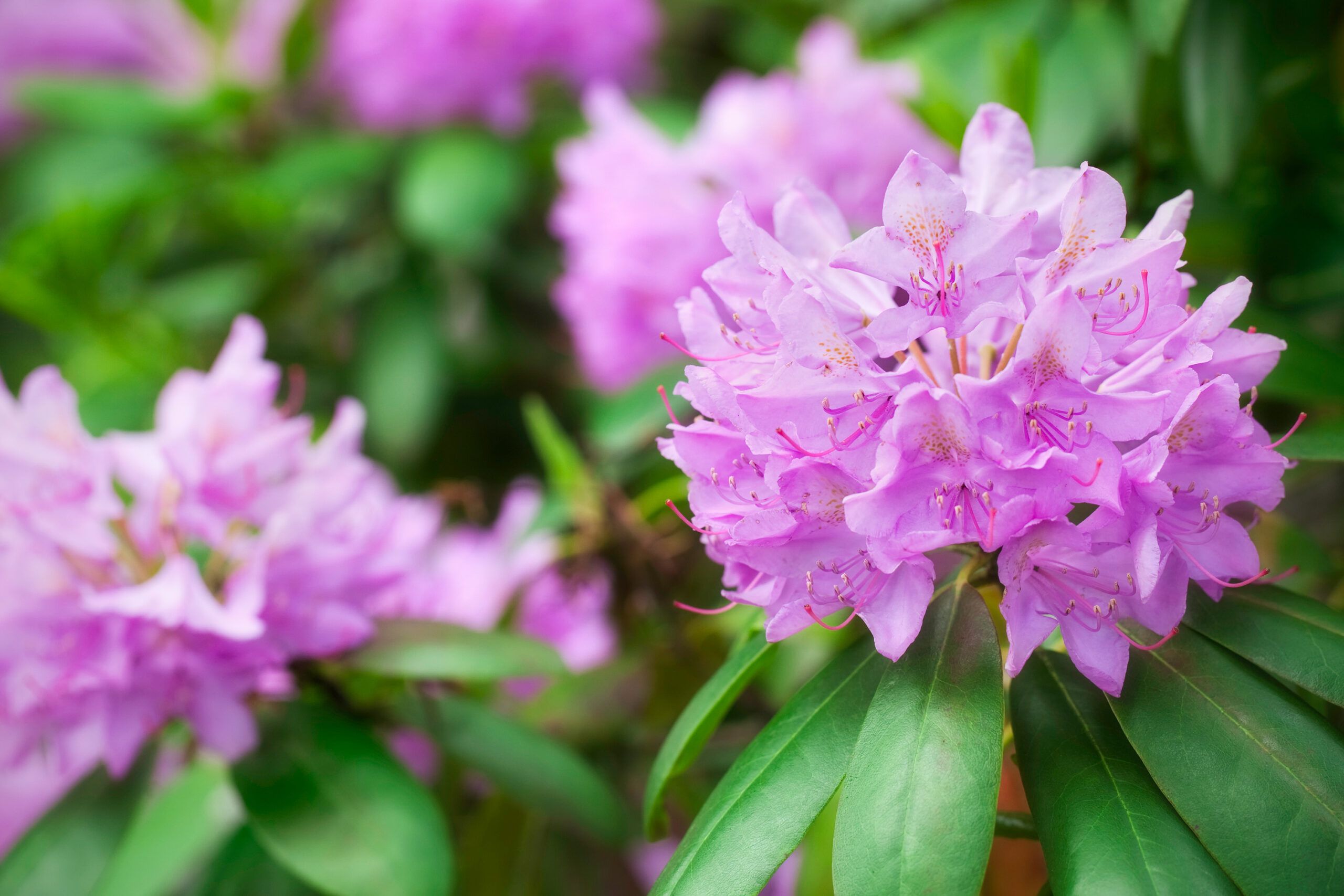
Evergreen shrubs form the backbone of foundation plantings, providing structure and year-round interest. Slow-growing, dwarf, or compact varieties are particularly suitable, especially for placement under windows.
Rhododendrons are prized for their showy spring flowers and glossy green leaves. The “Yaku Prince” variety is an excellent choice for foundation plantings. It features:
- Funnel-shaped pink flowers
- Mature size of 3 feet high and wide
- Olive-green leaves
- Suitable for USDA Hardiness Zones 4 to 8
For those seeking a white-flowering option, consider the azalea “Delaware Valley White,” a subspecies that grows slightly larger and thrives in Zones 5 to 8.
Littleleaf Boxwood
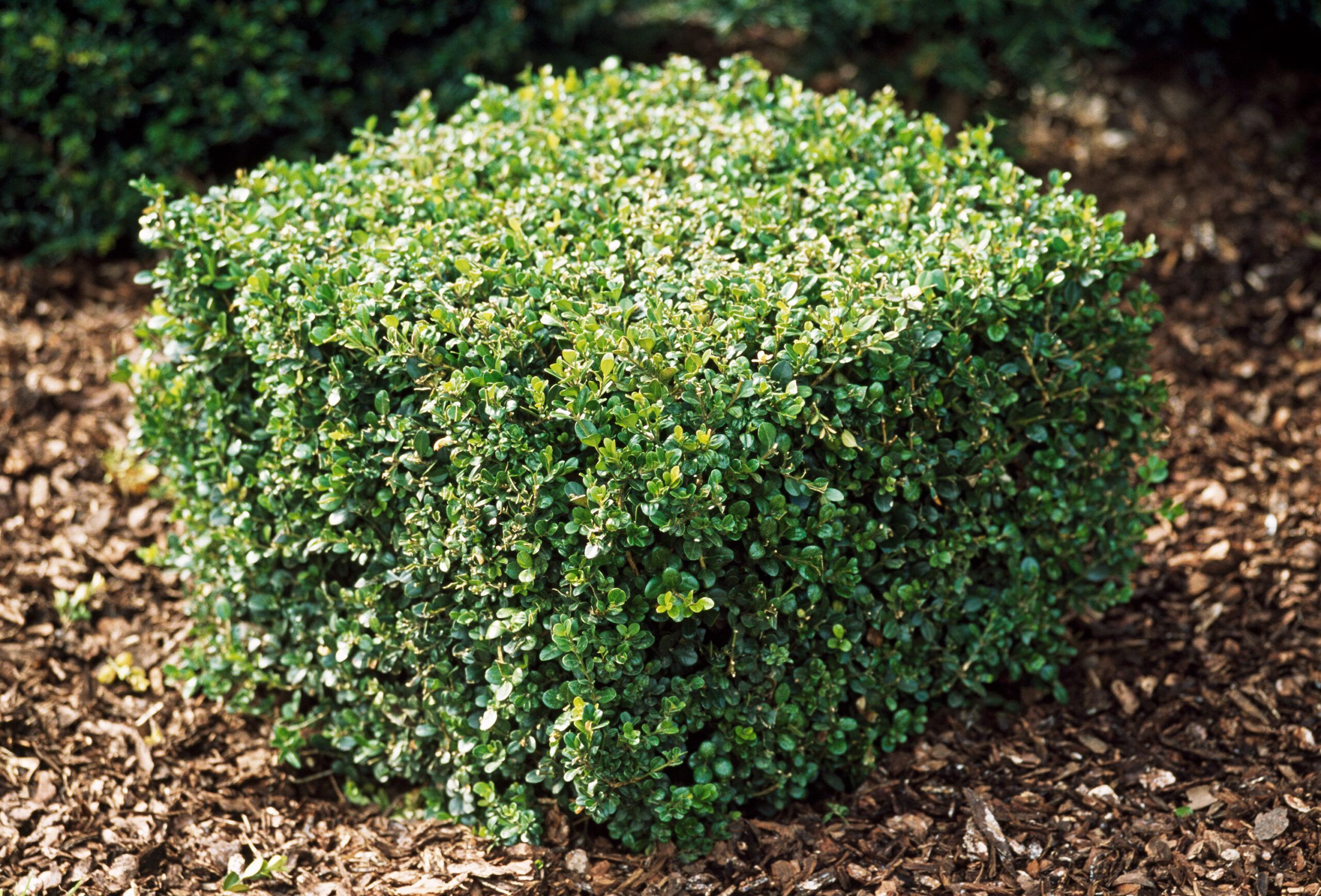
Boxwoods are classic foundation plants known for their dense, evergreen foliage and ability to be shaped. Three excellent compact varieties include:
- Green Velvet: Features pale green leaves and a mounding habit, growing up to 4 feet high and wide (Zones 5 to 8)
- Winter Gem: Reaches a similar size but with yellowish-green leaves (Zones 5 to 9)
- Wintergreen: A slower-growing variety with dark green foliage, reaching 2-3 feet high and wide (Zones 5 to 9)
These compact boxwoods provide structure and formality to your foundation planting while remaining manageable. The ability to shape them means they can be tailored to fit any design scheme.
Japanese Pieris
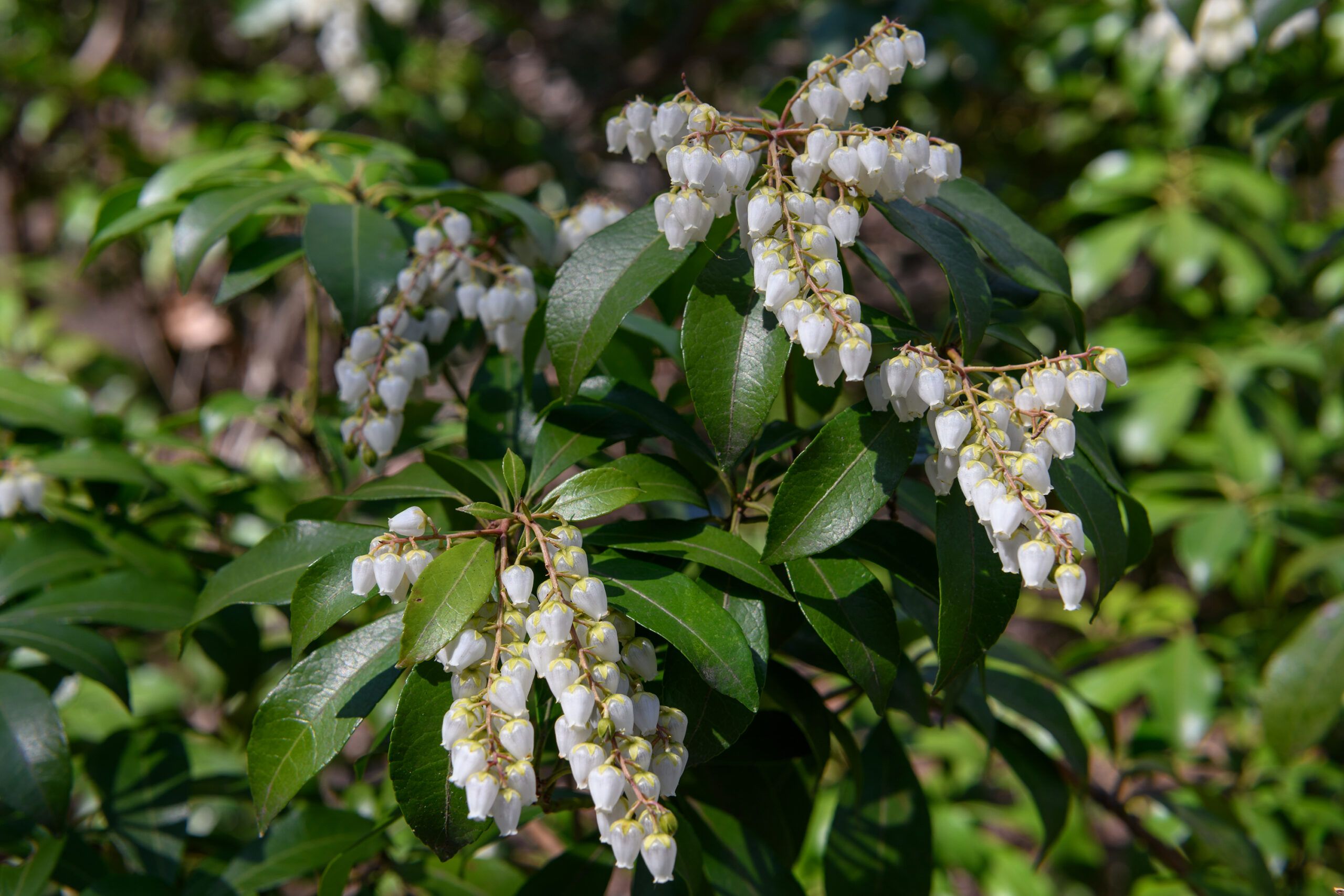
Japanese pieris is an excellent choice for foundation plantings due to its dense habit and branches that reach to the ground. The “Cavatine” cultivar offers:
- Leathery, dark green leaves
- Bell-like white flowers in spring
- Mature size of 3 feet high and wide
- Suitable for USDA Hardiness Zones 5 to 9
This evergreen shrub provides year-round interest and requires minimal pruning to maintain its compact shape. Combined with other foundation plants, it can serve as an anchor piece in your garden.
Inkberry
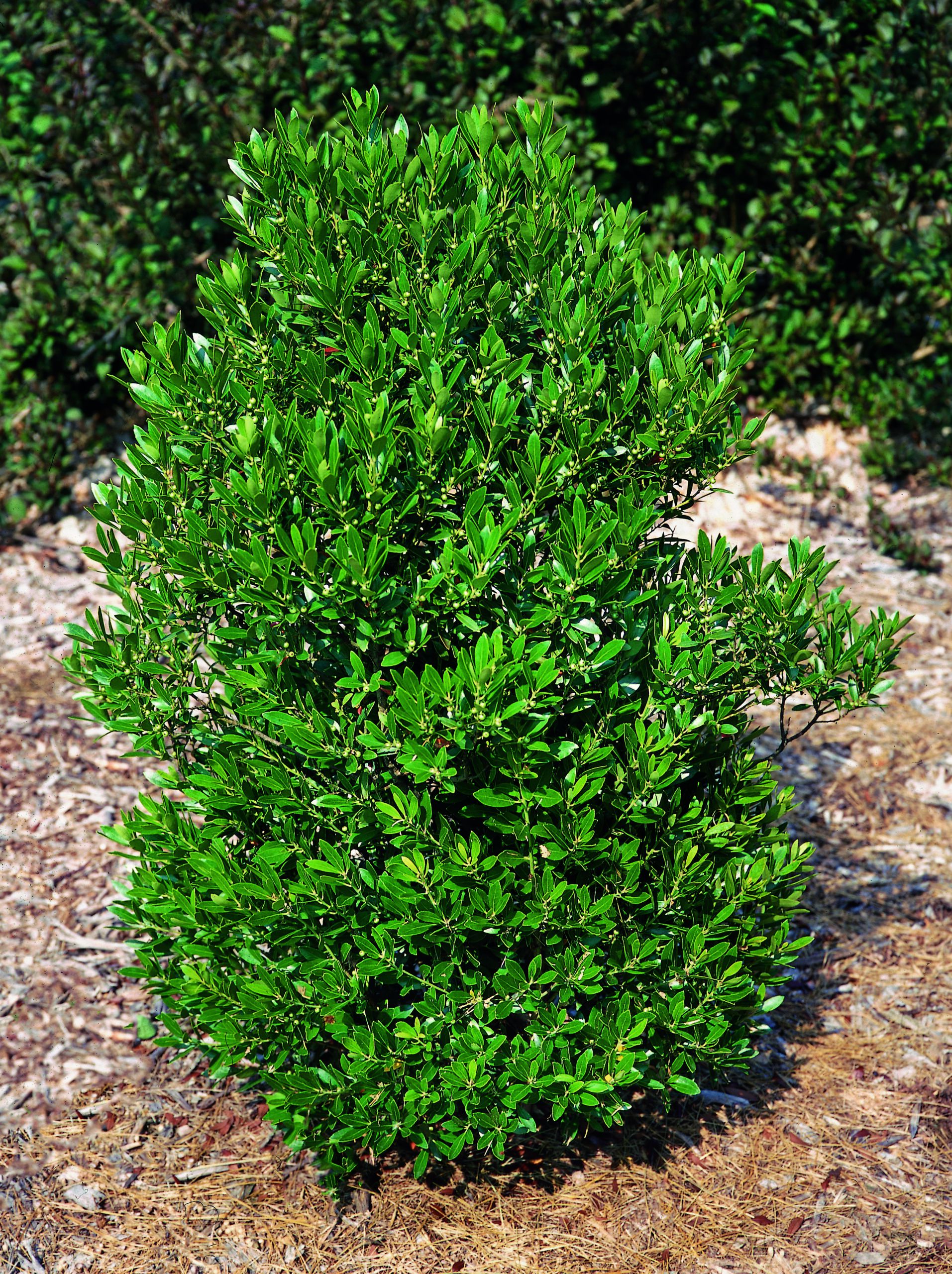
Inkberry is an evergreen shrub that works well in foundation plantings. Consider these varieties:
- Compacta: Dark green leaves and a rounded shape, growing to 4 feet high and 6 feet wide (Zones 5 to 9)
- Chamzin: A more compact variety reaching 3 feet high and 4 feet wide (Zones 4 to 9)
- Gem Box: An even smaller cultivar, growing to 2-3 feet high and wide (Zones 5 to 9)
Inkberry is an excellent alternative to boxwood, offering a similar look with the added benefit of being native to North America. Its capacity to adapt to varied growing conditions makes it a versatile choice.
Japanese Yew
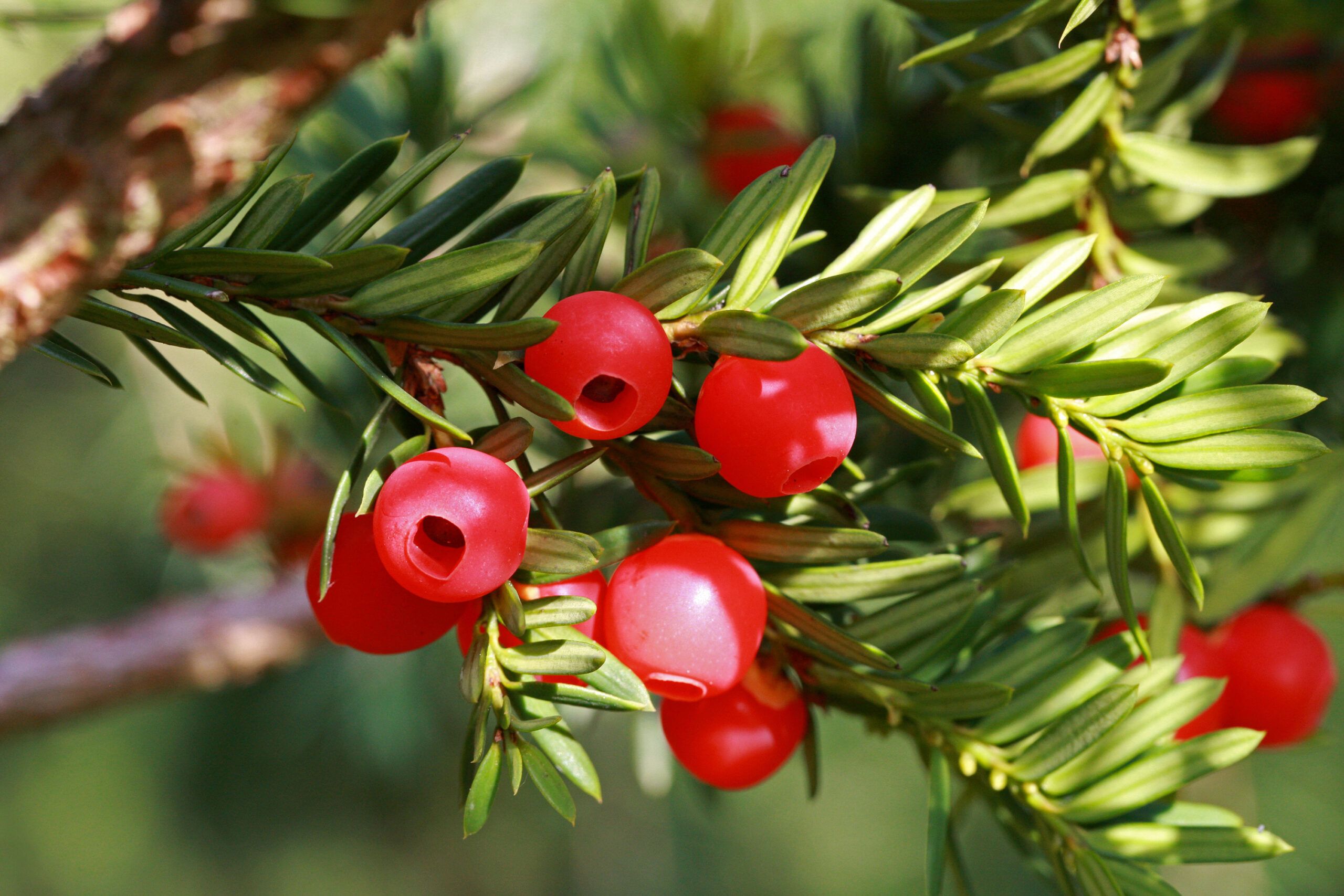
Japanese yew is a versatile evergreen shrub that works well in foundation plantings. Look for these shorter, slower-growing cultivars:
- Female Densa: Dark needles with red berries in winter, reaching 4 feet high and 8 feet wide (Zones 4 to 8)
- Hybrid Wardii: A slow grower that can reach 6 feet high and 20 feet wide in 20 years (Zones 4 to 7)
- Nana: A dwarf variety growing to 3-4 feet high and wide (Zones 4 to 7)
Japanese yew provides excellent year-round structure and can be easily pruned to maintain the desired shape and size. This shrub’s adaptability to various light conditions makes it a reliable foundation plant for both sunny and partially shaded areas.
Deciduous Flowering Shrubs: Slender Deutzia
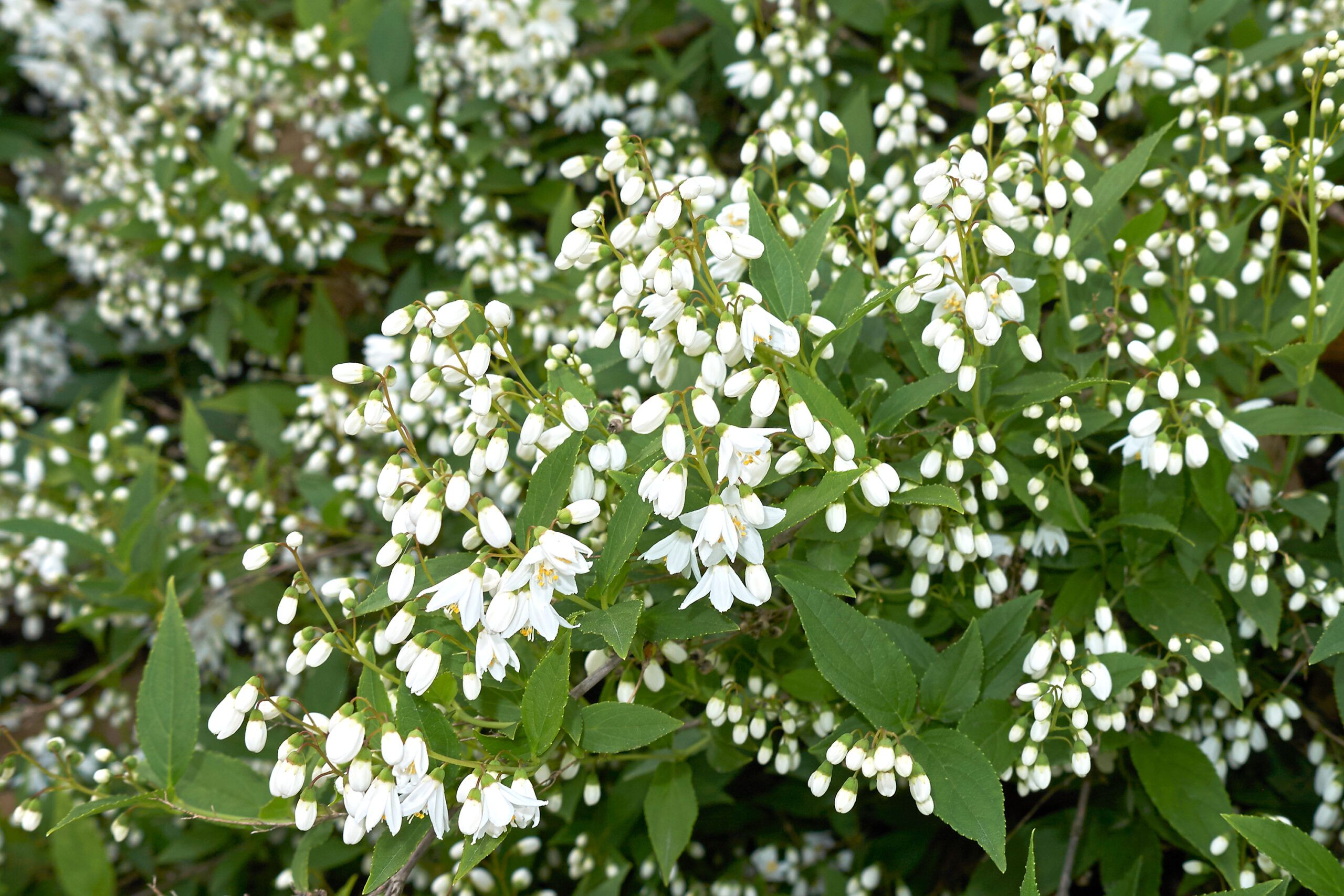
Deciduous flowering shrubs add seasonal interest and color to foundation plantings. Slender deutzia forms a mound of slender, flower-filled branches. The “Nikko” cultivar offers:
- White flowers in spring
- Dark blue-green foliage
- Mature size of 2 feet high and 5 feet wide
- Suitable for USDA Hardiness Zones 5 to 8
This compact shrub provides a burst of spring color and maintains a neat appearance throughout the growing season. Arranging Slender Deutzia in groups can create a dazzling display, particularly in springtime when their flowers are in full bloom.
Smooth Hydrangea
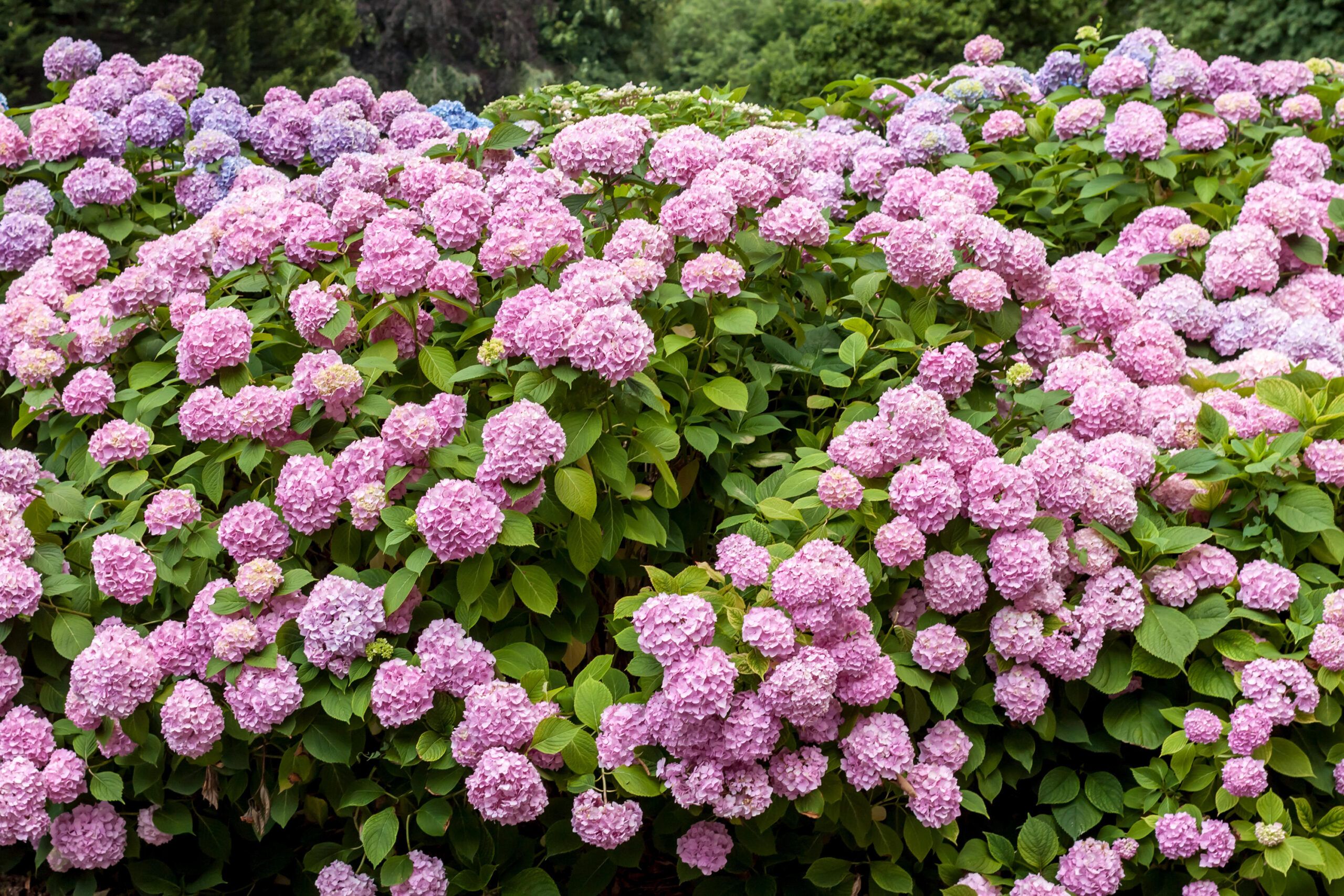
Hydrangeas are popular choices for foundation plantings due to their showy, reliable blooms. Consider these varieties:
- Annabelle: Features white blooms in summer
- Bella Anna: Covered in pink flowers until fall
- Incrediball: Produces large, white flower heads
All of these varieties grow up to 5 feet high and wide and are suitable for USDA Hardiness Zones 4 to 9. Plant them under windows where you can enjoy their beautiful blooms from both inside and outside your home. Their long flowering season ensures sustained visual appeal, bridging the gap between spring and fall.
Japanese Spirea
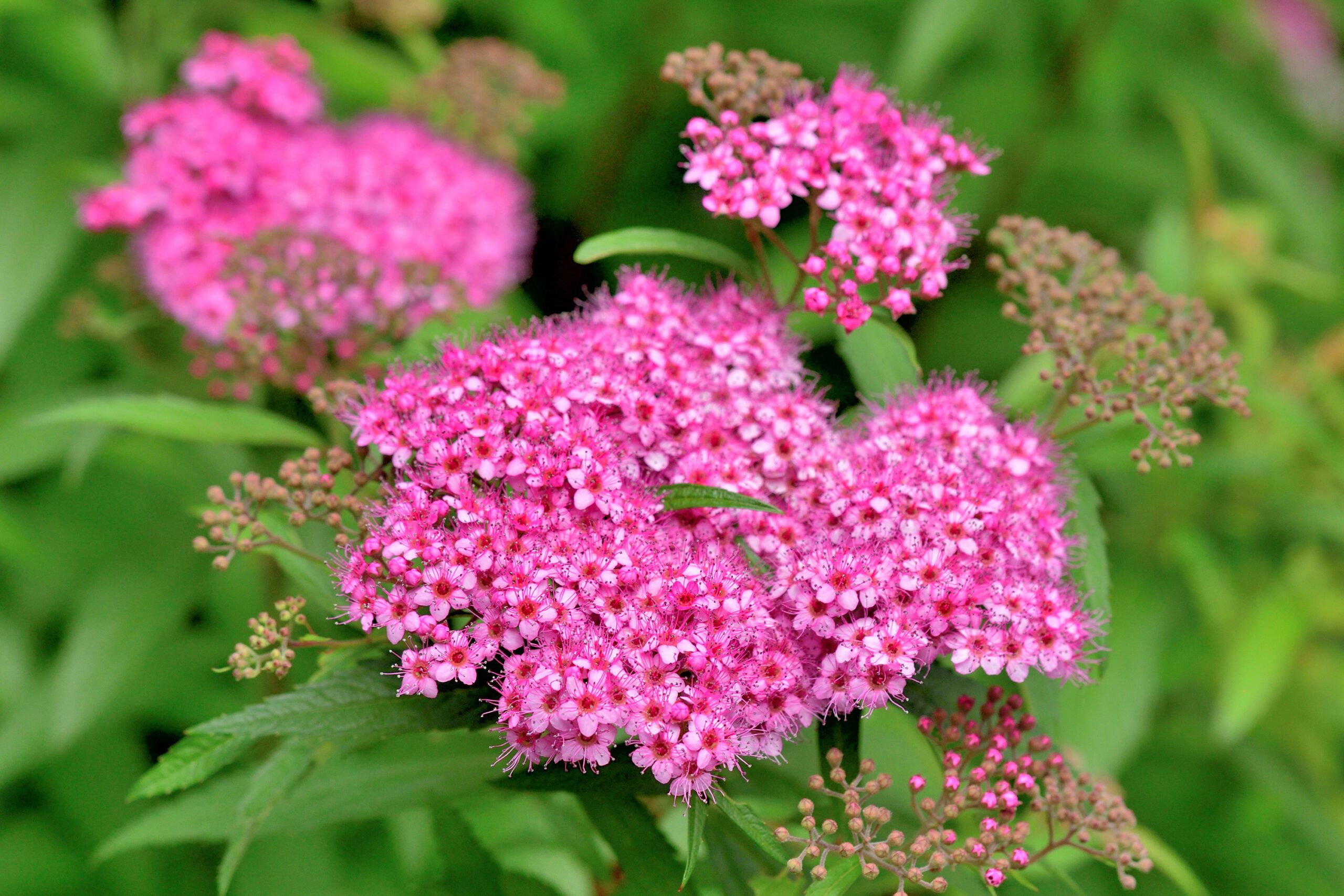
Japanese spirea is a long-blooming shrub that grows in upright mounds. The “Anthony Waterer” cultivar offers:
- Pinkish-red blooms from late spring to early summer
- Mature size of up to 4 feet high and 6 feet wide
- Suitable for USDA Hardiness Zones 4 to 8
Other notable varieties include “Little Princess” with pink flowers and “Goldflame” with gold foliage, both offering extended bloom periods and compact growth habits.
Virginia Sweetspire
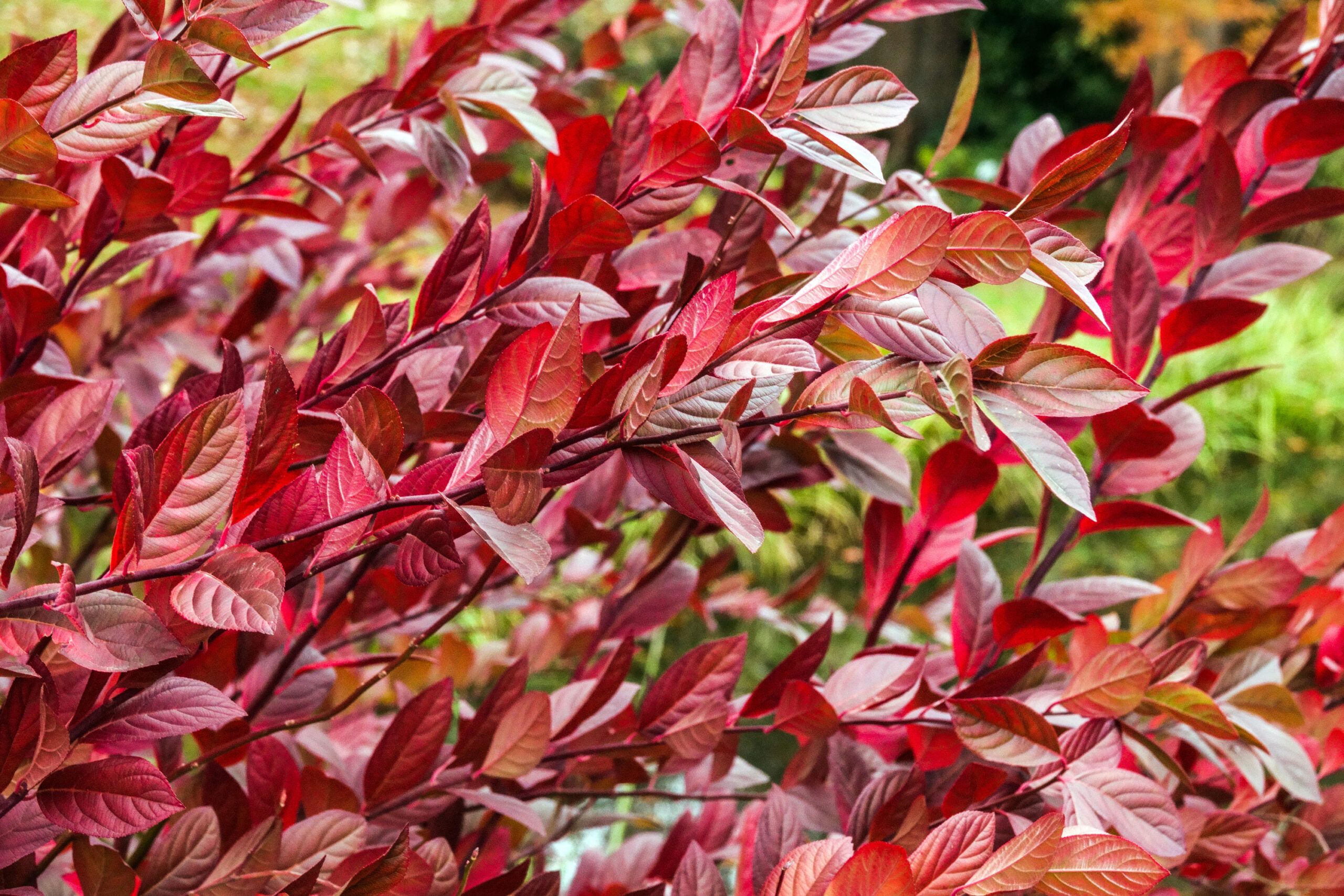
Virginia sweetspire is a versatile shrub that offers multi-season interest. Its features include:
- Dark green leaves that turn yellow-orange, reddish-purple, and crimson in the fall
- ‘Henry’s Garnet’ cultivar with 6-inch-long spikes of fragrant white flowers
- Mature size of up to 4 feet high and 6 feet wide
- Suitable for USDA Hardiness Zones 5 to 9
This shrub provides spring flowers, summer greenery, and stunning fall color. The evolving color palette of its foliage keeps your garden an ever-changing tapestry of hues.
Knockout Rose

Knockout roses are popular for their long blooming period and low maintenance requirements. The “Radrazz” cultivar offers:
- Compact shrub covered with red flowers from spring until frost
- Mature size of up to 4 feet high and wide
- Suitable for USDA Hardiness Zones 5 to 11
For variety, consider “Radtko” with double flowers or “Sunny Knockout” with yellow blooms. These roses provide continuous color throughout the growing season.
Flowering Perennials: True Geranium
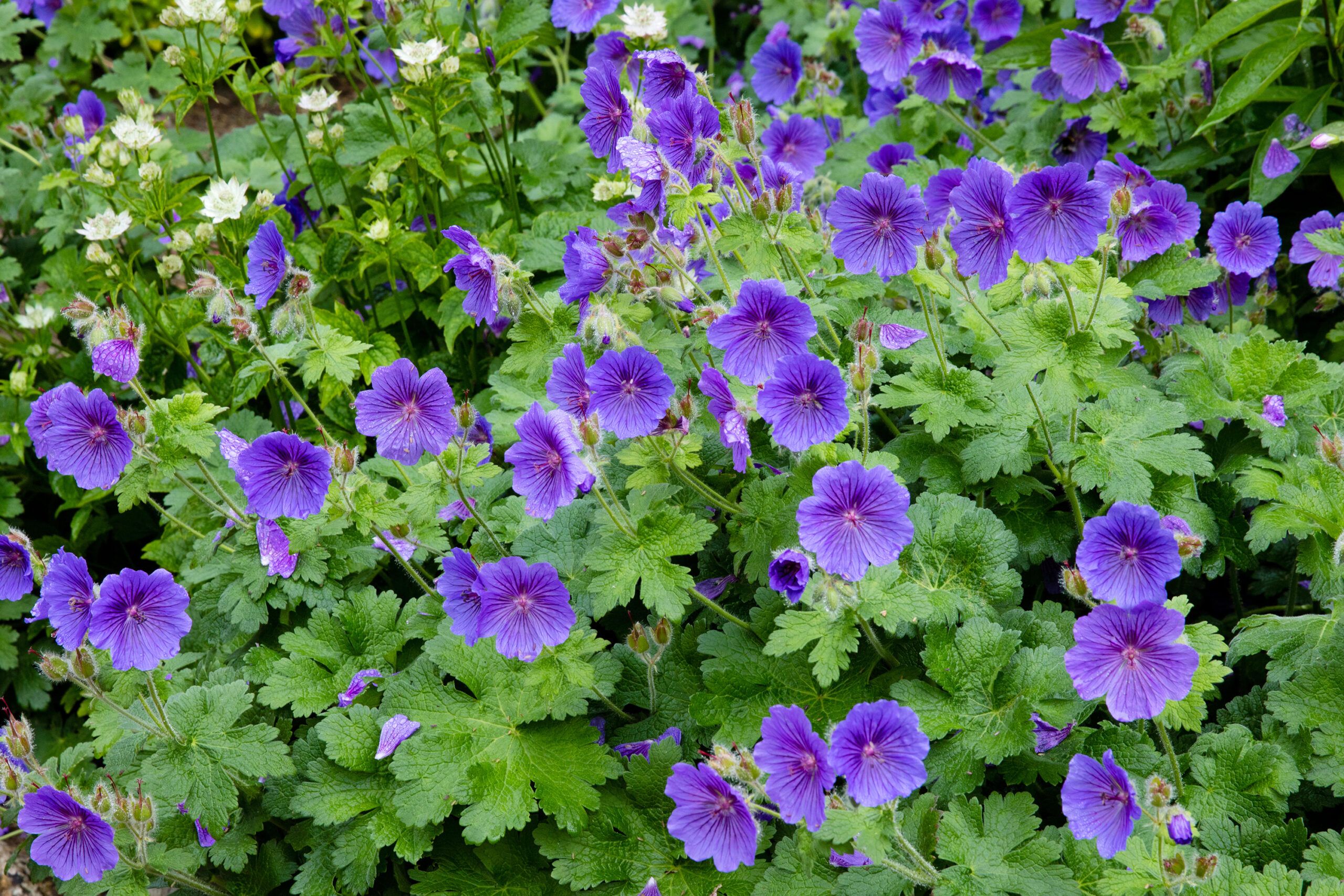
True geranium, particularly the “Rozanne” variety, offers a variety of colors and textures. Some features include:
- One of the longest-blooming varieties
- Violet petals around a white center
- Continuous blooms all summer
- Mature size of 18 inches high and 2 feet wide
- Suitable for USDA Hardiness Zones 5 to 8
This low-maintenance perennial provides a long season of color and pairs well with other foundation plants. The sprawling habit of “Rozanne” also serves as a groundcover, filling gaps and creating a unified look.
Catmint
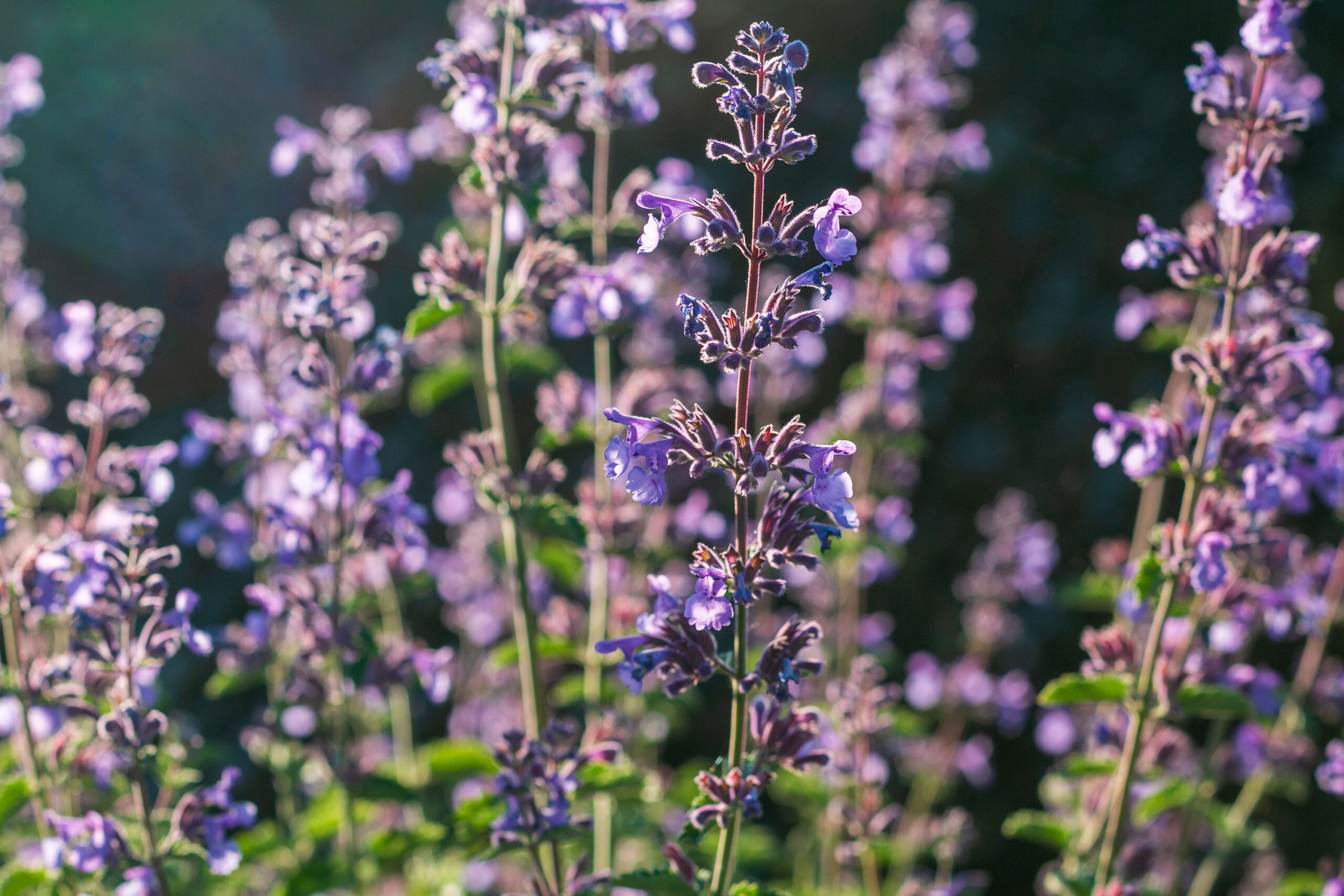
Catmint is a fragrant perennial that works well in foundation plantings. The “Walker’s Low” cultivar offers:
- Fragrant lavender-blue flowers on 24-inch-tall stems
- Mature spread of up to 3 feet wide
- Suitable for USDA Hardiness Zones 4 to 8
For a more compact option, consider “Blue Wonder” with dark blue flowers, suitable for Zones 3 to 8. Catmint provides a soft, billowing texture and attracts pollinators to your garden. Its aromatic foliage also deters pests.
Tickseed
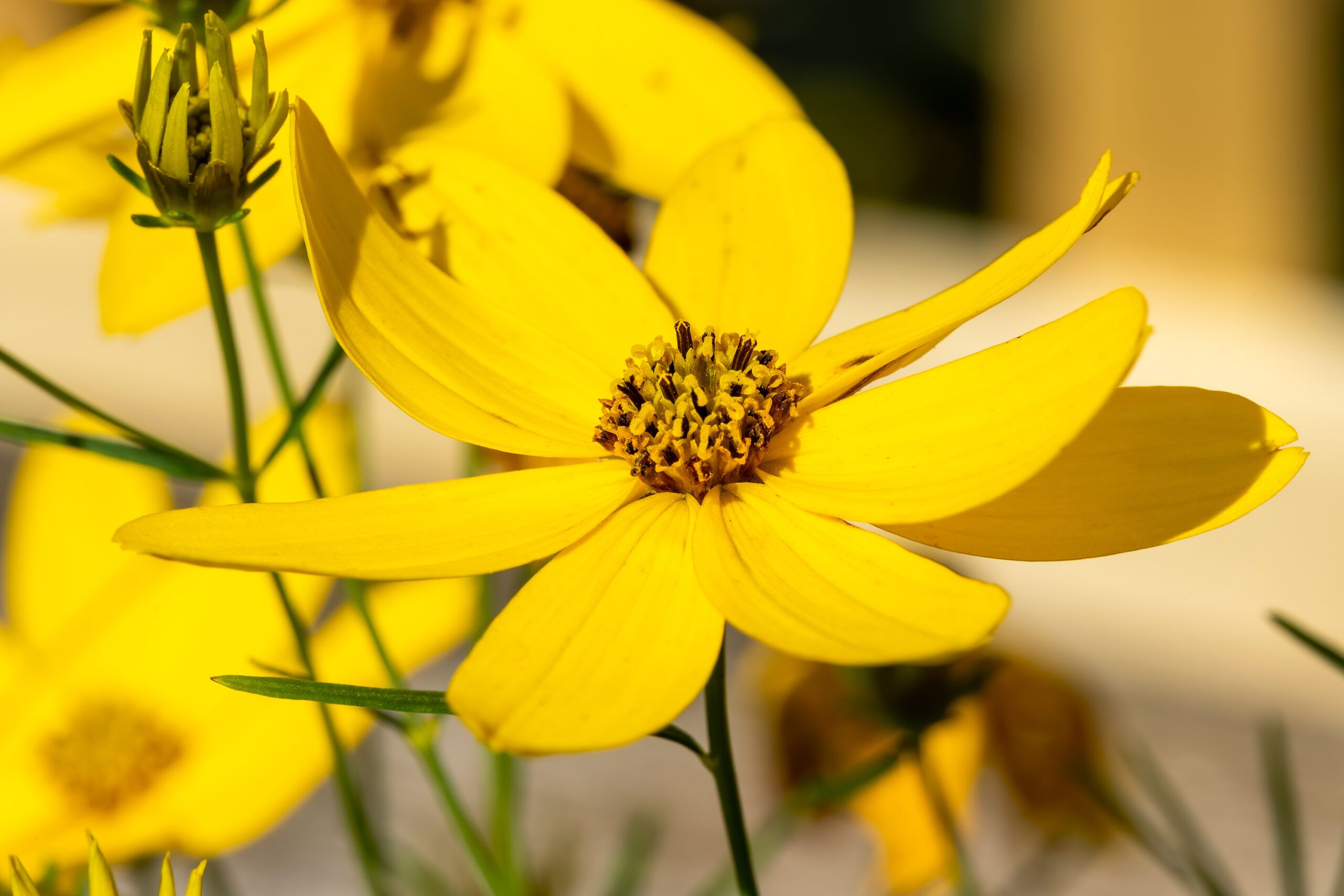
Tickseed is a cheerful, daisy-like perennial that adds bright color to foundation plantings. Consider these varieties:
- Zagreb: Golden flower heads
- Grandiflora: Darker yellow blooms
- Moonbeam: Pale yellow flowers
All of these varieties can grow to 18 inches high and wide and are suitable for USDA Hardiness Zones 4 to 9. Tickseed provides long-lasting color from early summer through fall. Their resilience and prolonged blooming period make them a stellar addition to any garden.
Salvia
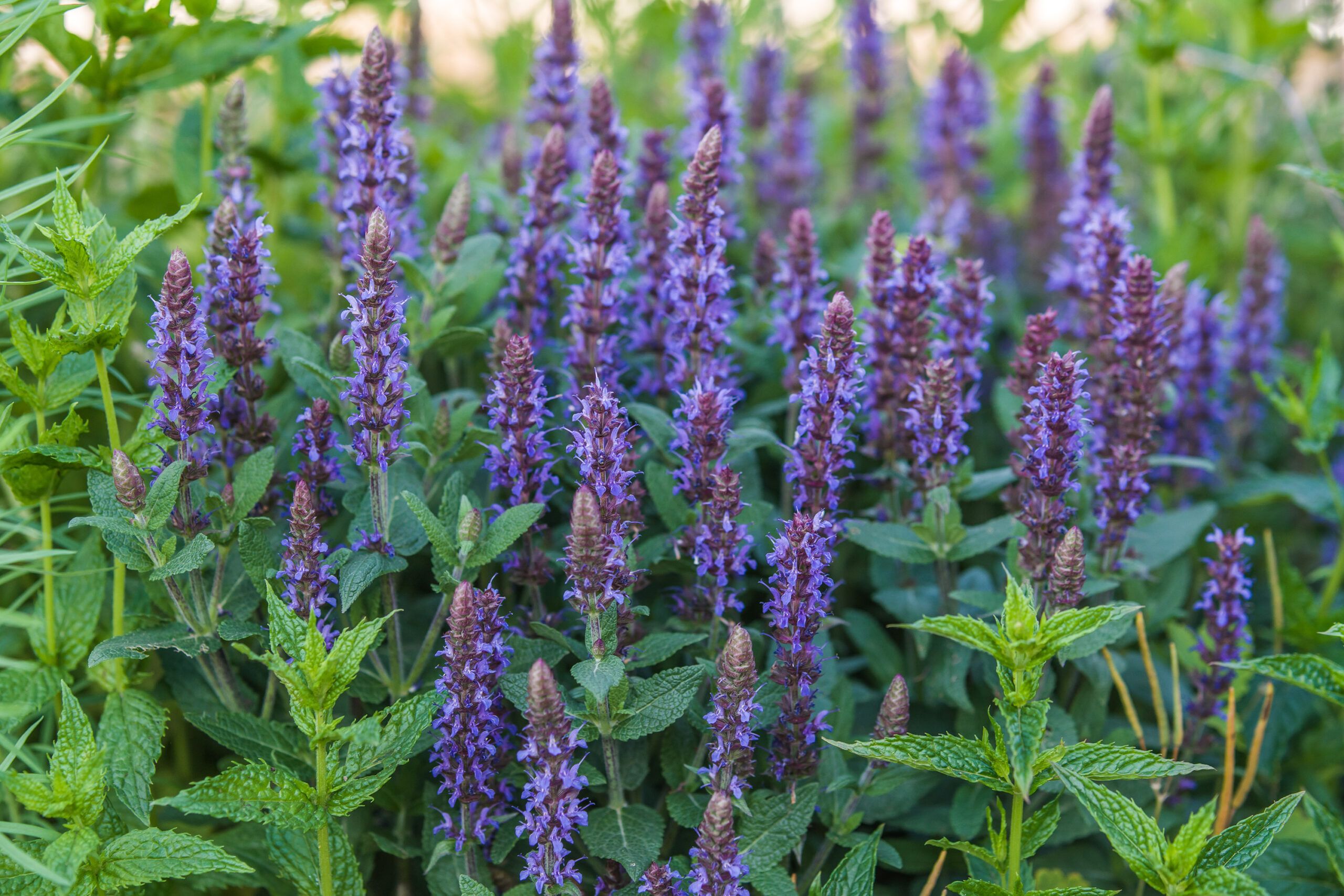
Salvia is a versatile perennial that adds vertical interest to foundation plantings. The “Ostfriesland” variety offers:
- Purple flowers from summer to fall
- Compact growth, reaching 18 inches high and wide
- Suitable for USDA Hardiness Zones 4 to 8
Other options include “May Night” with deep purple blooms and “Snow Hill” with white flowers. Salvia attracts pollinators and is deer-resistant, making it an excellent choice for many landscapes. Its upright growth habit also contrasts nicely with low-spreading perennials.
Shasta Daisy
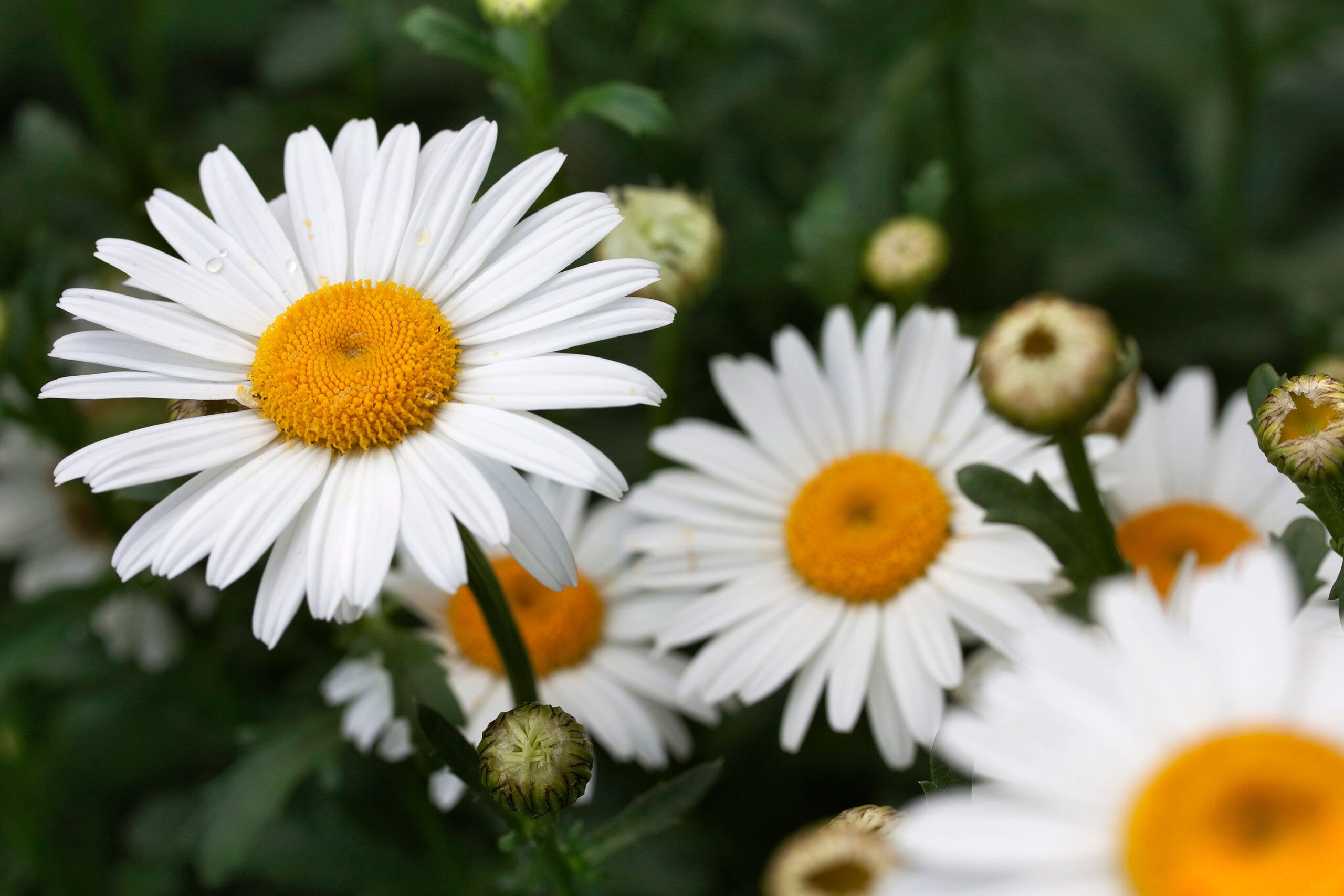
Shasta daisies provide classic, cheerful blooms to foundation plantings. The “Becky” cultivar features:
- 4-inch-wide blooms of white petals with yellow centers
- Ridged stems that require no staking
- Mature size of 4 feet tall and 3 feet wide
- Suitable for USDA Hardiness Zones 5 to 9
For extended color, consider planting with the shorter “Snow Lady” variety, which flowers earlier in the season. Their ability to thrive in a range of conditions makes Shasta daisies a reliable choice.
Incorporating Native Plants
When selecting foundation plants, consider incorporating native species. Native plants are well-adapted to local conditions, require less maintenance, and support local wildlife. By choosing native varieties, you not only beautify your home but also contribute to local biodiversity and sustainability efforts.
Seasonal Considerations
To ensure year-round interest in your foundation planting, consider the following seasonal aspects:
- Spring: Include early-blooming shrubs and bulbs
- Summer: Incorporate long-blooming perennials and summer-flowering shrubs
- Fall: Choose plants with attractive fall foliage or late-season blooms
- Winter: Include evergreens and plants with attractive bark or structure
By carefully selecting plants for each season, you can create a foundation planting that remains attractive throughout the year. Try to create an interplay of different textures, colors, and forms.
